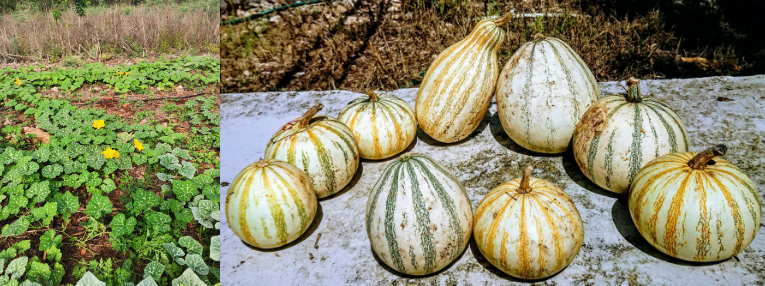Morpho-agronomic, physiological, nutritional, and nutraceutical evaluation of 10 native populations of Cucurbita moschata D. from southeastern Mexico.
Morpho-agronomic characterization of native pumpkins.
Keywords:
Cucurbita, fruit quality, germplasm, phytogenetic resource, nutraceutical valueAbstract
Cucurbita moschata D. is a species with great agro-industrial, nutritional, and medicinal potential due to its versatile uses in flowers, fruits, and seeds. However, the loss of traditional varieties, driven by their replacement with other crops, highlights the need to select materials with outstanding qualities. This study evaluated the agromorphological and physiological variability of 10 populations collected in Yucatán, Mexico, as well as the nutritional and nutraceutical quality of their fruits. Populations JMC2020-501, JMC2020-513, and JMC2020-514 stood out in fruit and seed traits, while JMC2020-518 excelled in photosynthetic rate and water use efficiency. In nutraceutical quality, JMC2020-501, JMC2020-502, and JMC2020-514 exhibited high carotenoid and flavonoid content, while JMC2020-502 and JMC2020-519 had elevated vitamin C levels. This study highlights the potential of these populations for genetic improvement programs and the promotion of sustainable and native crop production.

Published
Issue
Section
Copyright (c) 2025 Kati Medina-Dzul, Esaú Ruíz-Sánchez, Rubén Andueza-Noh, Neith Aracely Pacheco-López, Fernanda Ricalde-Pérez, Alexis Lamz-Piedra, Roberto R. Ruiz-Santiago

This work is licensed under a Creative Commons Attribution-NonCommercial-ShareAlike 4.0 International License.





